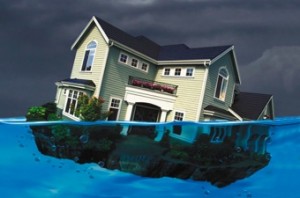 Over 20 of the 51 largest markets are showing many underwater homes are not rising in value. Now, the rate of homeowners who owe more on their mortgage than their home is worth has stalled and is increasing in some areas, according to a report from Zillow.
Over 20 of the 51 largest markets are showing many underwater homes are not rising in value. Now, the rate of homeowners who owe more on their mortgage than their home is worth has stalled and is increasing in some areas, according to a report from Zillow.
Florida and the Midwest have some markets with more than a quarter of mortgaged homes underwater. Home values rose 5.9 percent nationally last year, making low-end homes far more likely to be worth less than the balance of their mortgage. While the percentage of mortgages that are in negative equity nationally is at 16.9 percent as of the fourth quarter of 2014, the negative equity rate among low end homes is much higher at 27.3 percent. The national negative equity rate is expected to fall to 15.4 percent by the end of 2015.
"Higher negative equity rates have become the new normal," said Zillow Chief Economist Stan Humphries. "We've long been expecting the negative equity rate to fall more slowly as home value growth also slows, and unfortunately that's exactly what we're seeing. Compounding the problem is the fact that negative equity is decidedly not an equal opportunity predator, and looms larger over the bottom 10 percent of homes, where homeowners are least prepared to withstand the assault."
Data shows less valuable homes are more likely to be underwater. In Atlanta 49 percent of homes in the bottom-third of home values are in negative equity, compared to 11 percent of mortgaged homes in the highest valued third.
Among the large cities, Virginia Beach at 28.3 percent, Jacksonville at 27 percent, Las Vegas at 26.4 percent, and Atlanta at 26.1 percent had the highest rates of negative equity. San Jose had the lowest rate of negative equity at 4 percent, with Dallas-Ft. Worth, San Francisco, Denver, and Houston all showing lower rates as well. Cities including Cincinnati, Kansas City, and Cleveland all had higher rates near 20 percent.

 theMReport.com Your trusted source for mortgage banking news
theMReport.com Your trusted source for mortgage banking news








